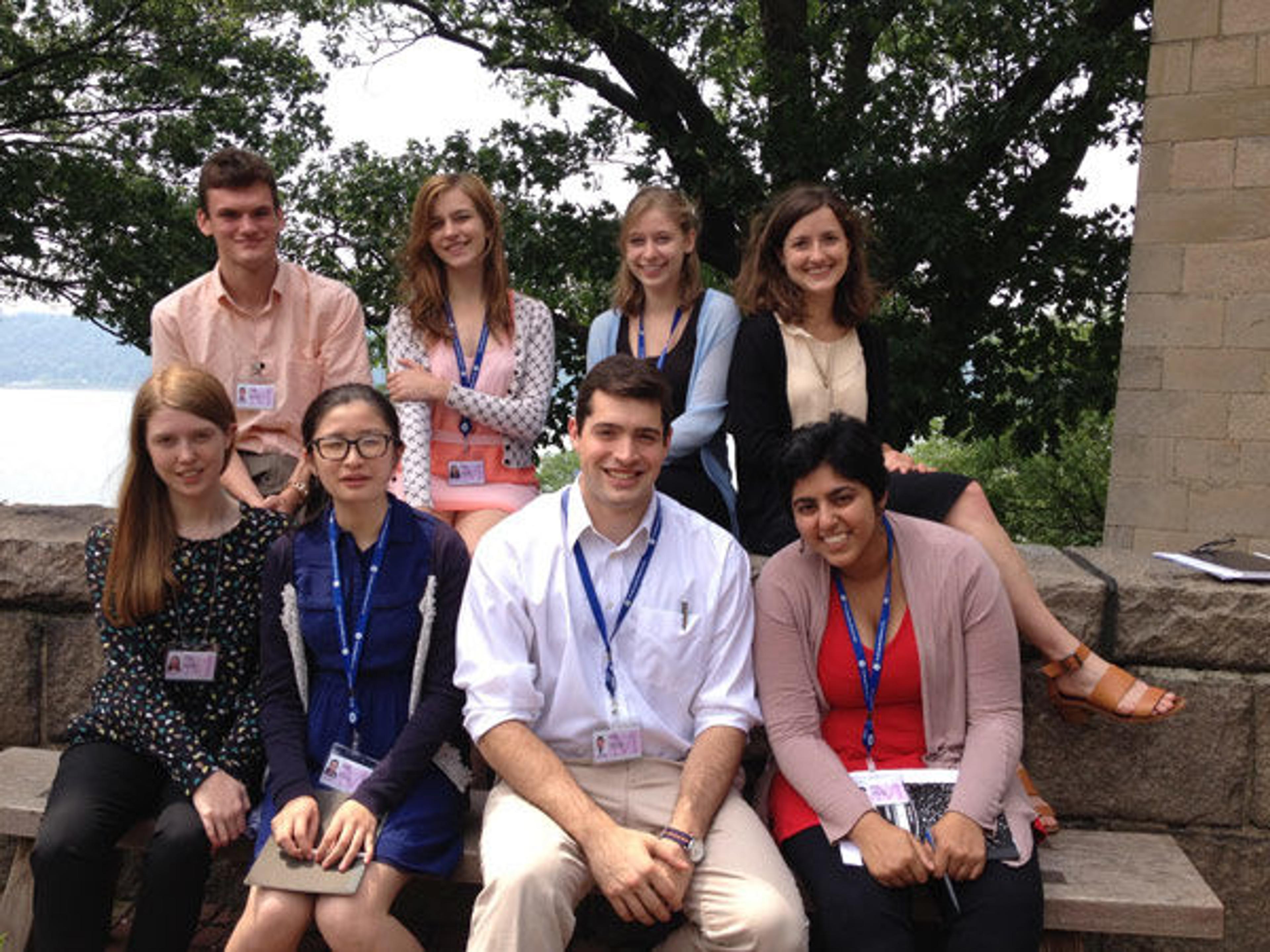
This summer's interns—selected from over two hundred applicants—from left to right: Noah Stevens-Stein (Yale University), Rachel Wilson (Princeton University), Bella Gurevich (Stony Brook University), Lily Oyler (Middlebury College), Murielle O'Brien (Grinnell College), Hui Yan (Smith College), Peter Vergara (Fordham University), and Minna Nizam (Drew University). Photograph by Leslie Bussis Tait
«While summer may be a slow season for some, it is teeming with activity at The Cloisters museum and gardens, especially during the nine weeks of The Cloisters Summer College Internship Program. This intensive program provides training on the Museum and its collection, the contextual background of medieval art, and pedagogy, giving interns the opportunity to conduct workshops for day-camp groups and pursue concentrated research to develop a thematic tour for the general public. Special gallery talks are the final project of this rigorous summer program.»
This year's interns chose their topics during the first week of the program so that they could dive quickly into the research of the themes in general and the specific objects and plants on their itineraries. Each intern submitted weekly assignments, including outlines and annotated bibliographies, and over the course of the summer's research, they revised drafts and rehearsed their presentations.
Throughout the summer, the interns met with me and my fellow museum educators at The Cloisters, Nancy Wu and Emma Wegner, to receive feedback on their assignments. They also consulted with curators, conservators, and horticulturists at The Cloisters as specific questions regarding objects and garden materials on their tours arose. The range of topics provided an exciting week for an audience of around thirty-four visitors attending each talk. Here are a few of the highlights:
Music
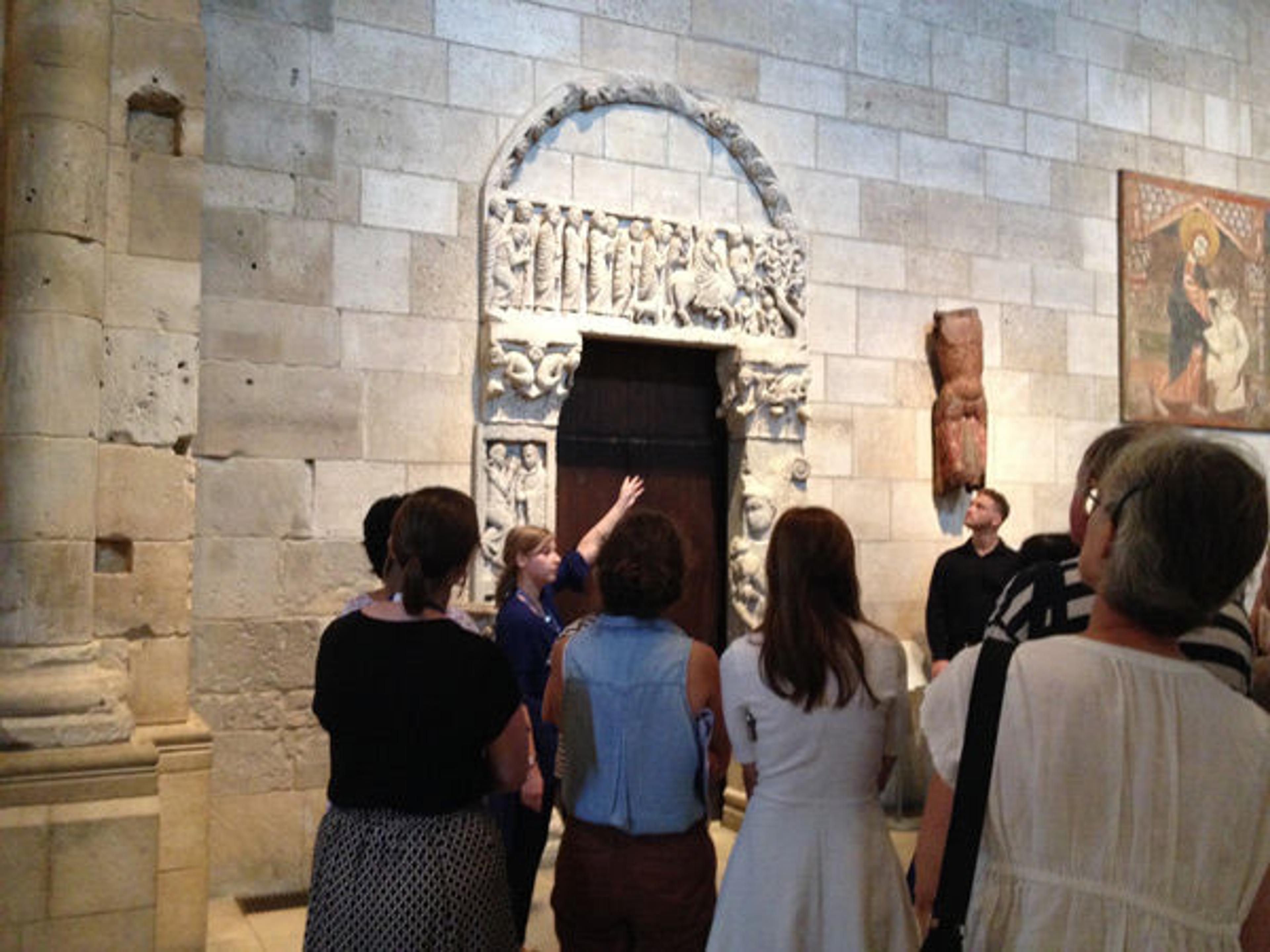
Bella Gurevich points to the details of lintel of the Portal from the Church of San Leonardo al Frigido. Photograph by Leslie Bussis Tait
As part of her talk, Music and Its Contexts in the Middle Ages, Bella Gurevich spoke about the representation of the apostles chanting as they follow Jesus into Jerusalem on the lintel of the Portal from the Church of San Leonardo al Frigido. She invited a singer to perform the antiphon that would have been sung on Palm Sunday.
East Meets West
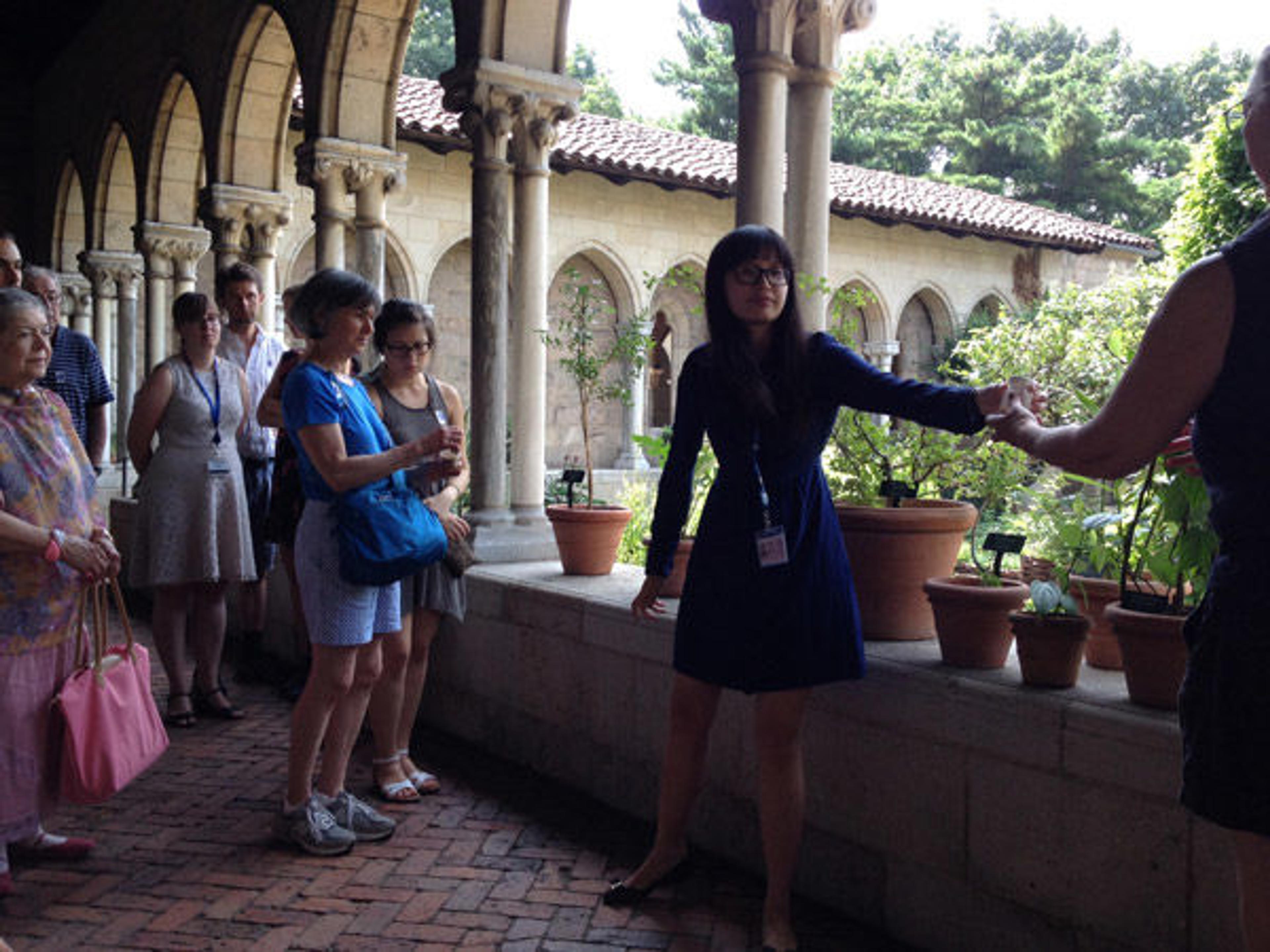
Hui Yan passes around bottles with powdered frankincense and myrrh as she discusses the plants in the Bonnefont Herb Garden from which they derive. Photograph by Leslie Bussis Tait
Hui Yan discussed the interaction of Muslims and Christians in medieval Spain in her talk, Encountering the East in Medieval Europe. One of the examples she presented was a twelfth-century fresco of a camel from San Baudelio de Berlanga, Spain. A significant portion of the talk focused on the importation of spices and incense from the East and their culinary, medicinal, and religious uses throughout medieval Europe.

Peter Vergara speaks about a capital in gallery 003. Photograph by Leslie Bussis Tait
Peter Vergara also discussed Christian and Muslim interaction during the Middle Ages in his talk, Art across Medieval Spain, in which he pointed out examples of Valencian lusterware and carvings on ivories and capitals from tenth-century Cordoba. He also spoke about pilgrimage, another common theme in Spanish medieval art, citing an alabaster statue of Saint James the Greater in the guise of a pilgrim by Gil de Siloe.
Peter Vergara informs visitors as to why the statue of Saint James the Greater was so important. Video by Nancy Wu
Piety
Lily Oyler's talk, Vision and Devotion in the Middle Ages, included the sculpture Enthroned Virgin and Child, which exemplifies a type that was very popular in twelfth-century Europe, especially the Auvergne region of France.
Lily Oyler explains why the coloration of the sculpture Enthroned Virgin and Child was essential to its visibility. Video by Nancy Wu
Lily discussed technical and symbolic properties of stained glass, an important medieval artistic material, highlighting the panels depicting The Angel Annunciate and The Standing Virgin from the stained-glass windows at the late thirteenth-century convent of Altenberg-an-der-Lahn.
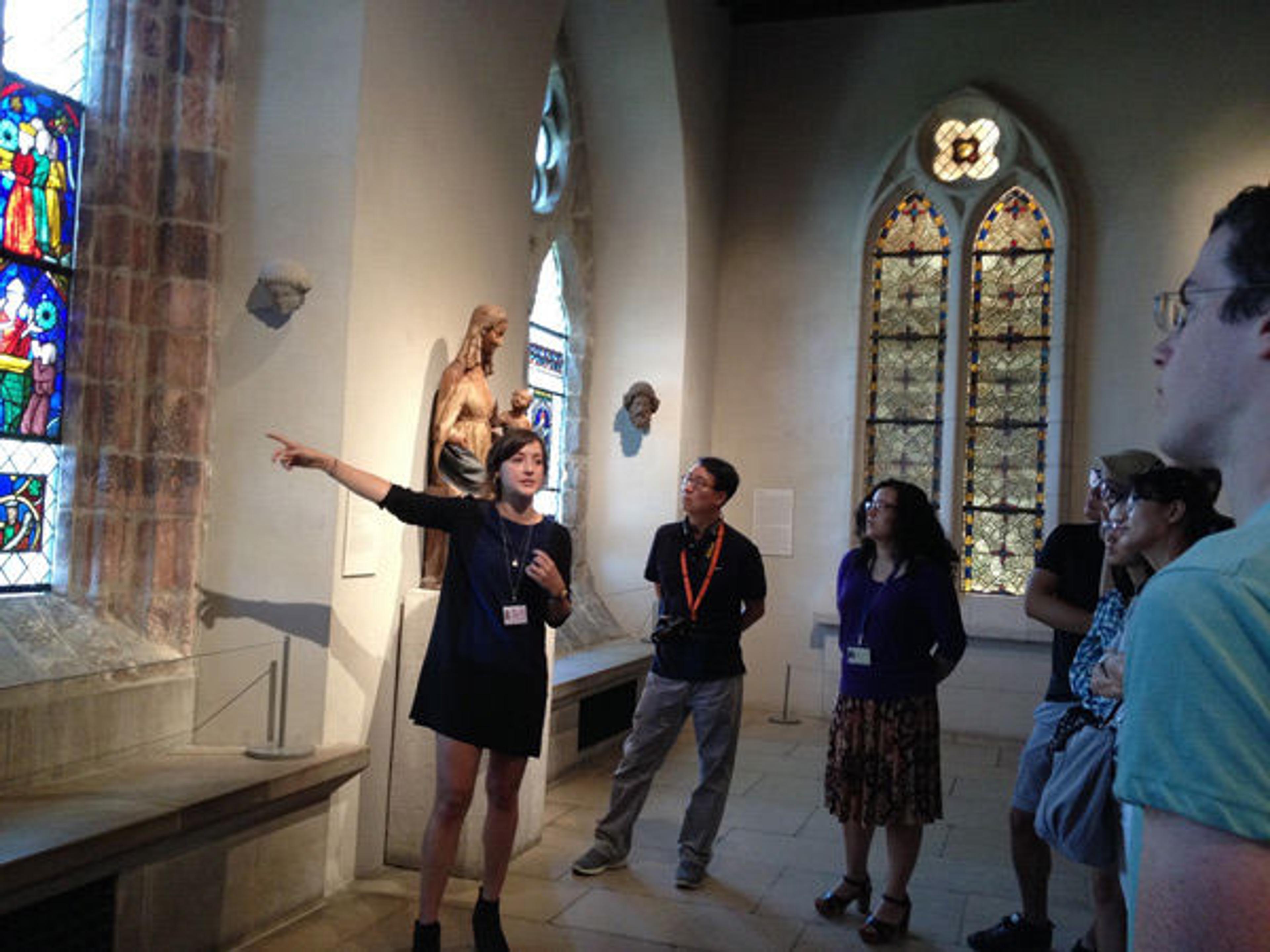
Lily Oyler points out The Angel Annunciate and The Standing Virgin to visitors. Photograph by Leslie Bussis Tait
Medicine
Murielle O'Brien's talk, The Art of Healing: Medicine in the Medieval World, required much interdisciplinary research. The wealth of plants in the Bonnefont Herb Garden made narrowing down the selection difficult. Murielle discussed a range of treatments made from herbal remedies. Among the specimens was the magnificent Horn of Plenty and Downy Thorn Apple (Datura metel), with its pin-wheeled flowers and menacing spiky seed pods.
Murielle O'Brien explains the Downy Thorn Apple's anesthetic properties. Video by Nancy Wu
Several works of art in the collection relate to the topic of medicine and healing, including the polychrome sculpture of Saint Roch displaying his plague sore. Murielle spoke about the late medieval French sculpture and the cult of Saint Roch that existed during outbreaks of the plague in medieval Europe.
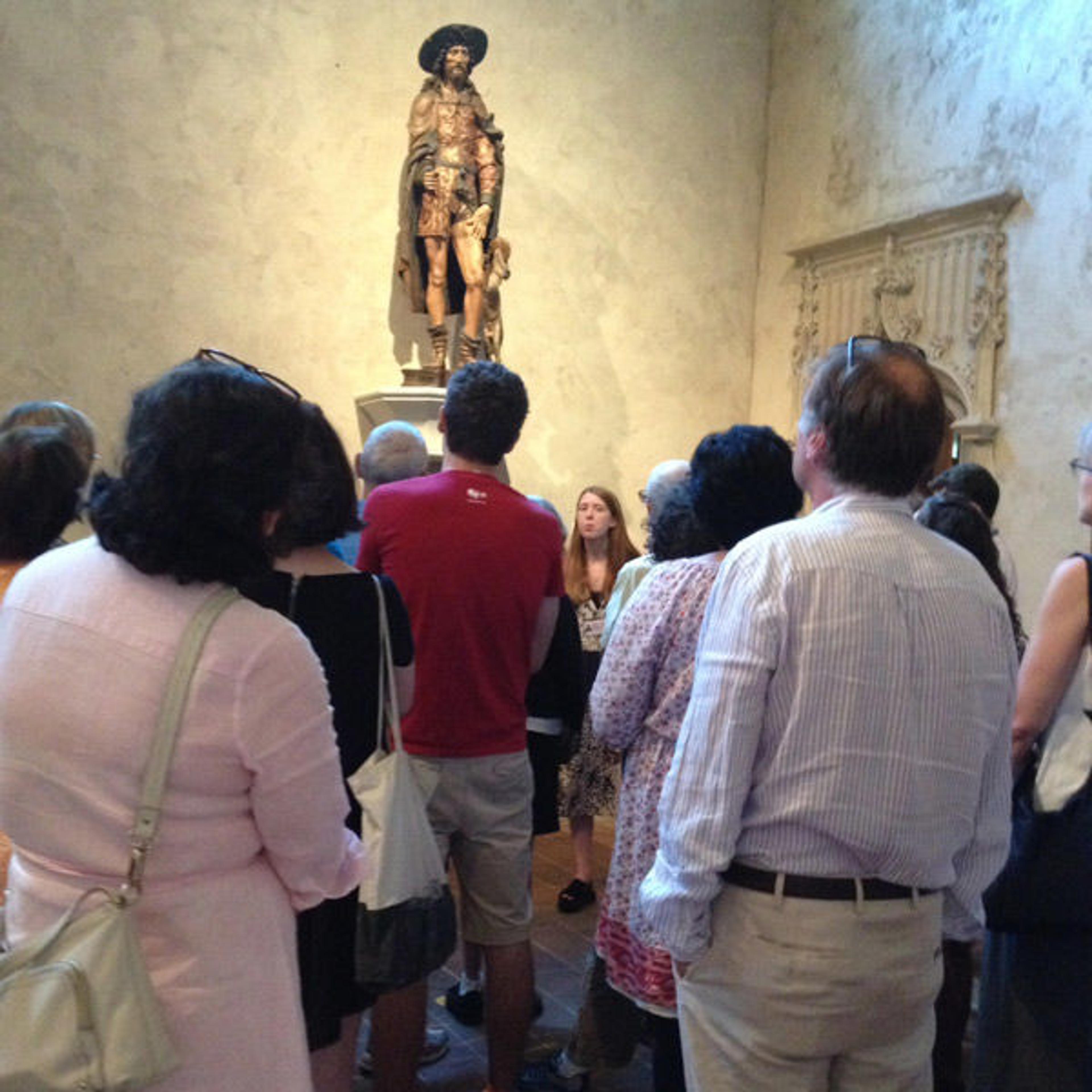
Murielle O'Brien tells visitors about the cult of Saint Roch. Photograph by Leslie Bussis Tait
Animals
Both real and imaginary animals are abundant at The Cloisters, and they were featured prominently in Minna Nizam's talk, Medieval Beasts: Art and Meaning. The twelfth-century Arch with Beasts from Narbonne, France, is a veritable bestiary in stone. Minna Nizam discussed several of the beasts carved in marble.
Minna Nizam defines harpy for visitors and points them out in the Arch with Beasts. Video by Nancy Wu
Of course, this topic would not have been complete without presenting the beloved Unicorn Tapestries. Minna discussed the symbolism of the unicorn as well as several other animals and birds in The Unicorn Is Found and The Unicorn in Captivity.

Minna Nizam reveals specific details about The Unicorn Is Found and The Unicorn in Captivity to visitors. Photograph by Leslie Bussis Tait
Marriage
Inspired by our special exhibition Treasures and Talismans: Rings from the Griffin Collection, Noah Stevens-Stein chose the topic Medieval Marriage: Romance and Reality for his talk. He discussed a remarkable ruby ring in the exhibition as well as several of the objects that enrich the context of the rings on display, including a coffret (minnekästchen) from fourteenth-century Germany that would have been a container for precious objects such as rings.
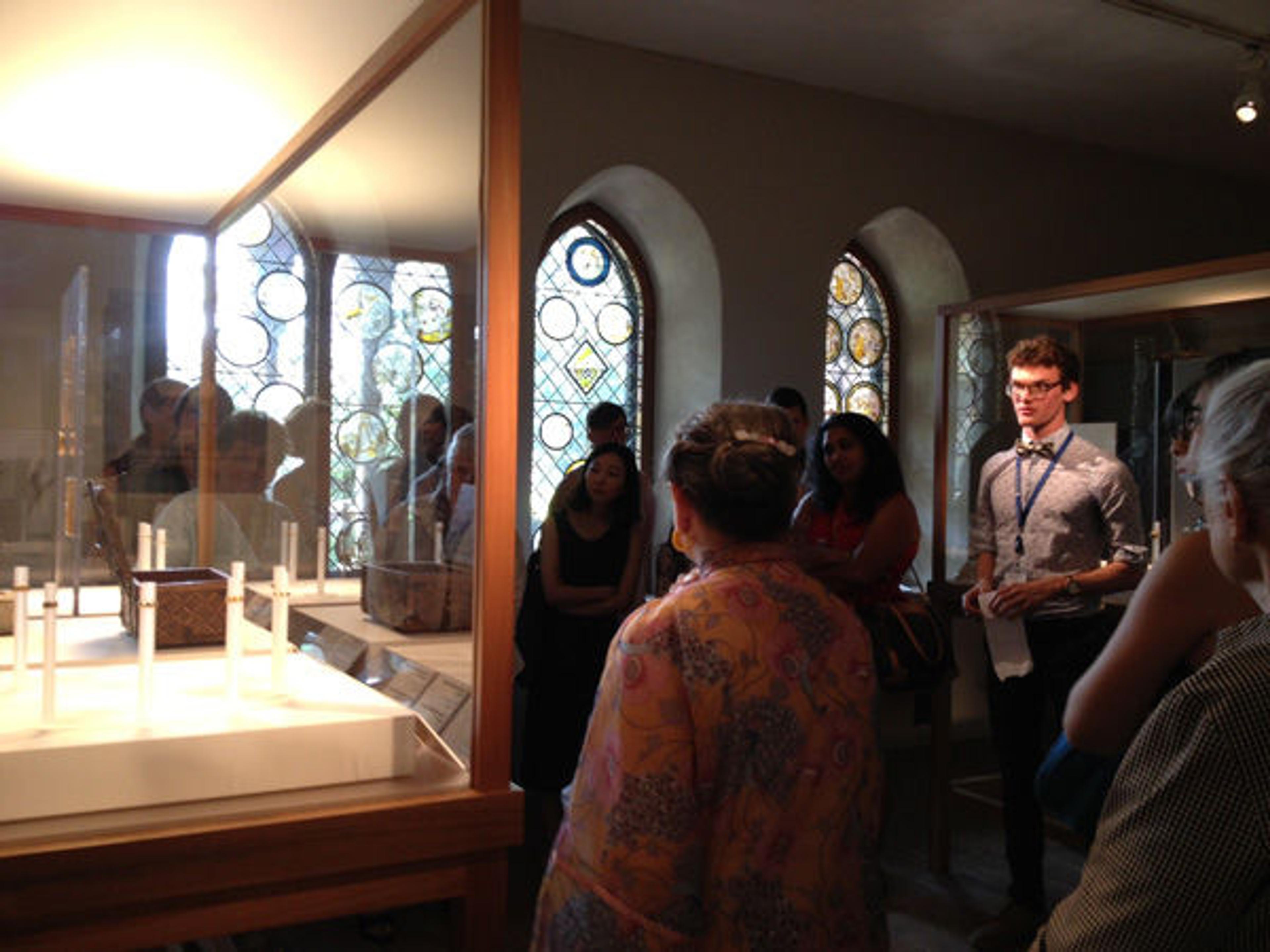
Noah Stevens-Stein reveals the meaning behind a coffret (minnekästchen) in the exhibition Treasures and Talismans: Rings from the Griffin Collection. Photograph by Leslie Bussis Tait
The Cloisters is fortunate to have generous loans from other departments at the Museum for Treasures and Talismans, including a magnificent oil painting by Petrus Christus, A Goldsmith in His Shop, lent by The Robert Lehman Collection. Noah discussed the status of rings and other goldsmiths' work in the context of marriages of nobility in medieval Europe.

Noah Stevens-Stein speaks about the possible identity of the medieval goldsmith and his sumptuously dressed clients, before Petrus Christus's A Goldsmith in His Shop. Photograph by Leslie Bussis Tait
History
Rachel Wilson's gallery talk, Imagining the Past in the Middle Ages, examined works of sculpture, tapestry, and painting in order to understand the complex perspective of medieval people towards earlier periods of history. Among the objects Rachel discussed was the limestone Doorway from Moutiers-Saint-Jean, carved in the mid-thirteenth century in Burgundy, France. The doorway features two kings who are said to be the legendary founders of the monastery, King Clovis I and his son, Clothar I.
Rachel Wilson brings specific details about the kings in the Doorway from Moutiers-Saint-Jean to the audience's attention. Video by Nancy Wu
Rachel also explained how the decoration on a Southern French painted box featuring scenes from the Legend of Guilhem of Orange resounded across centuries: from the heroic figure who lived in the eighth to early ninth century, to the twelfth- and early thirteenth-century cycle when the chansons de geste of his life and deeds was written, to the first quarter of the thirteenth century when the wooden box was painted. On loan to The Cloisters, the box is appropriately displayed in the Saint-Guilhem Cloister, named after this heroic figure who founded the monastery.
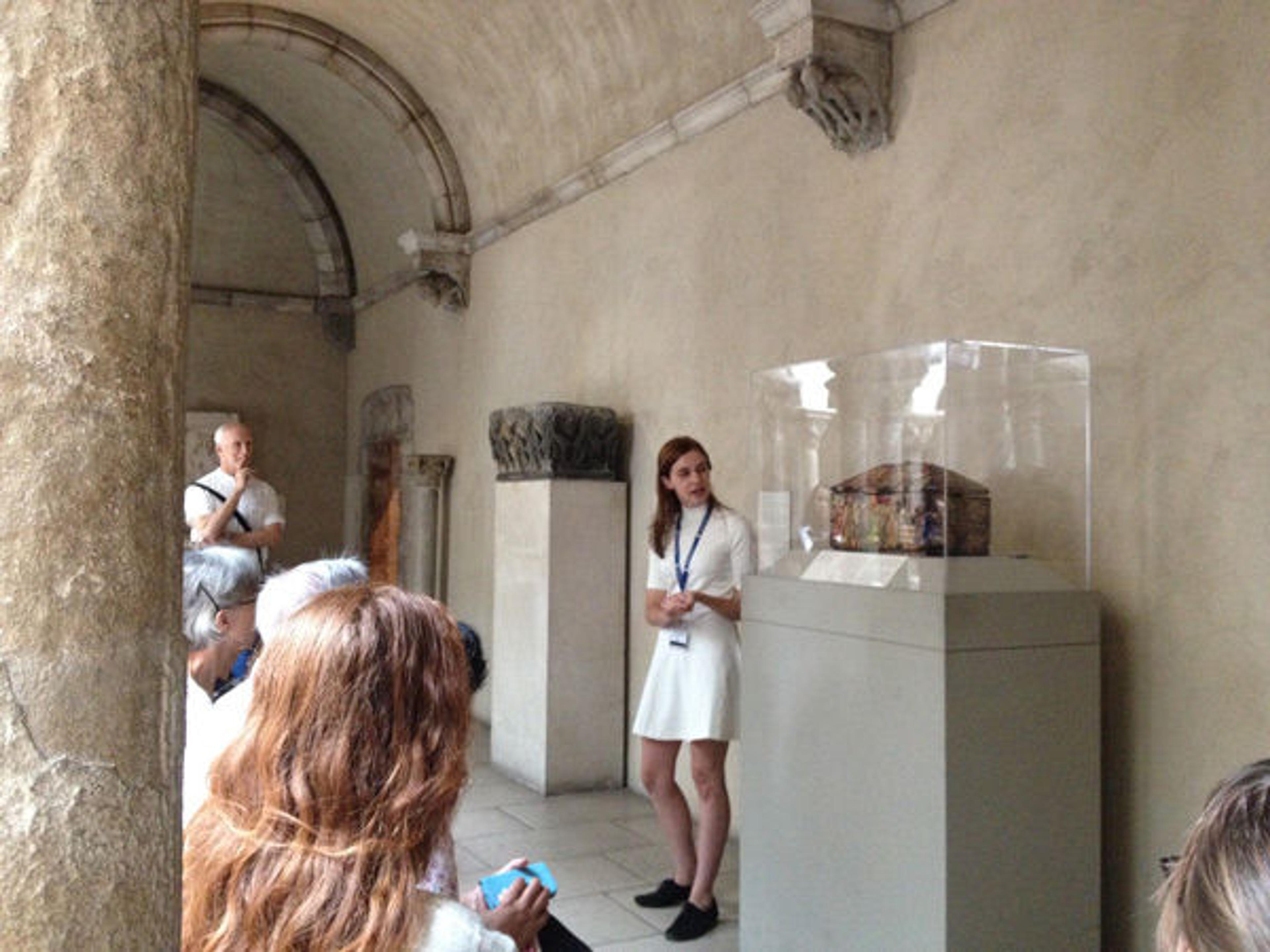
Rachel Wilson recounting the adventures of Guilhem of Orange depicted on a thirteenth-century painted box. Photograph by Leslie Bussis Tait
Tune in Next Summer
The audience for these talks each year includes several dedicated Museum visitors who mark their calendar so that they can attend as many of the talks as possible. Their keen interest in learning about works of art and the gardens at The Cloisters is a great inspiration to our interns. Please check back in July for Gallery Talks at The Cloisters events to be sure to catch next summer's week of special gallery talks.
Related Links
In Season: "Founding Father" (June 12, 2015)
In Season: "Reclaiming Saint James" (July 31, 2015)